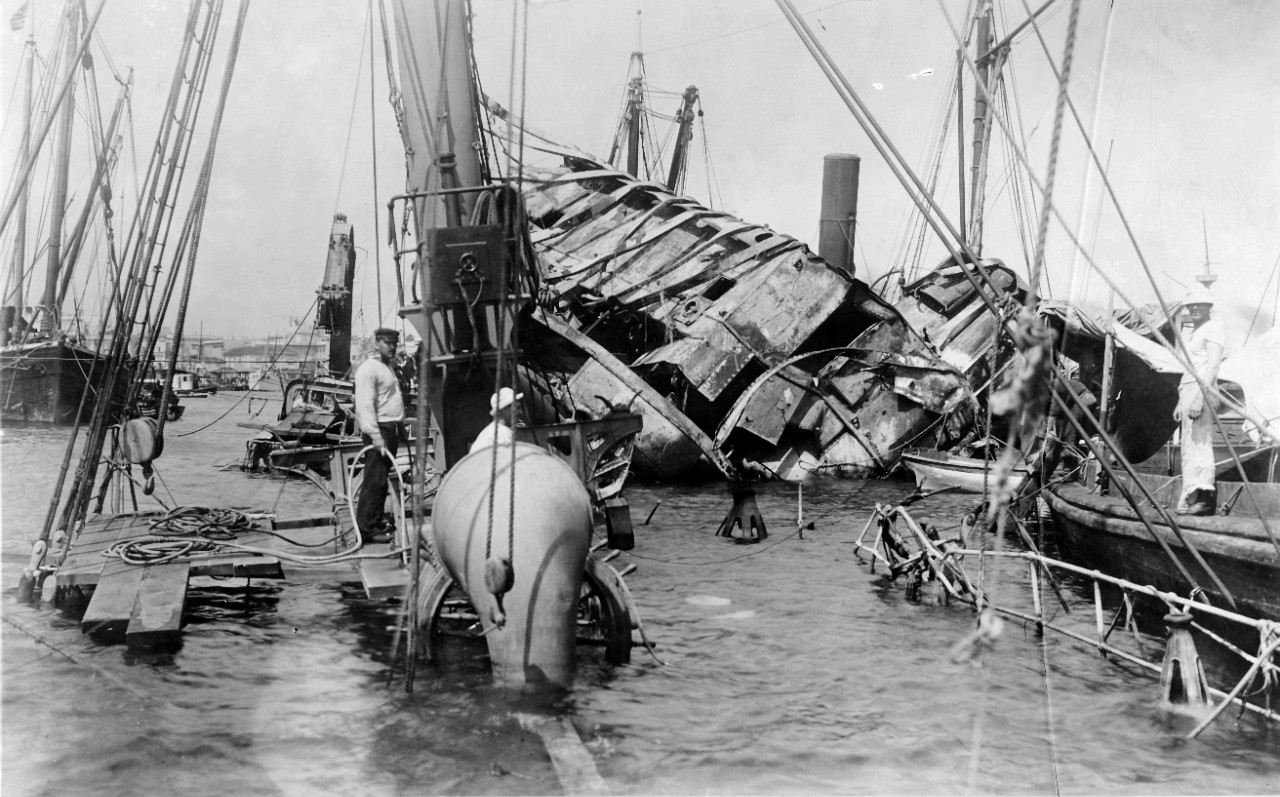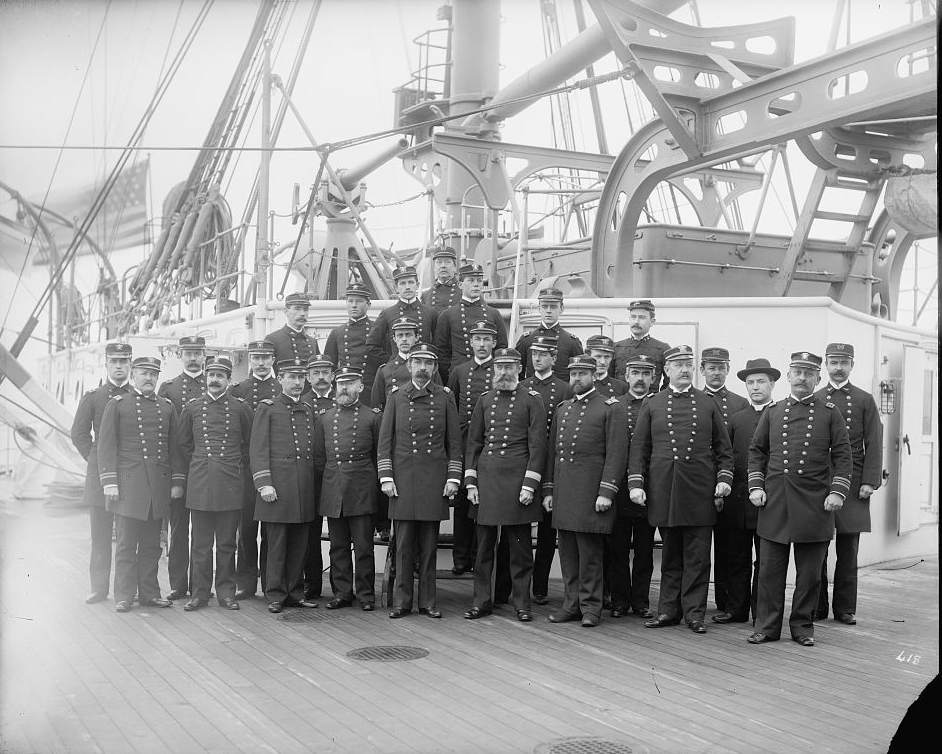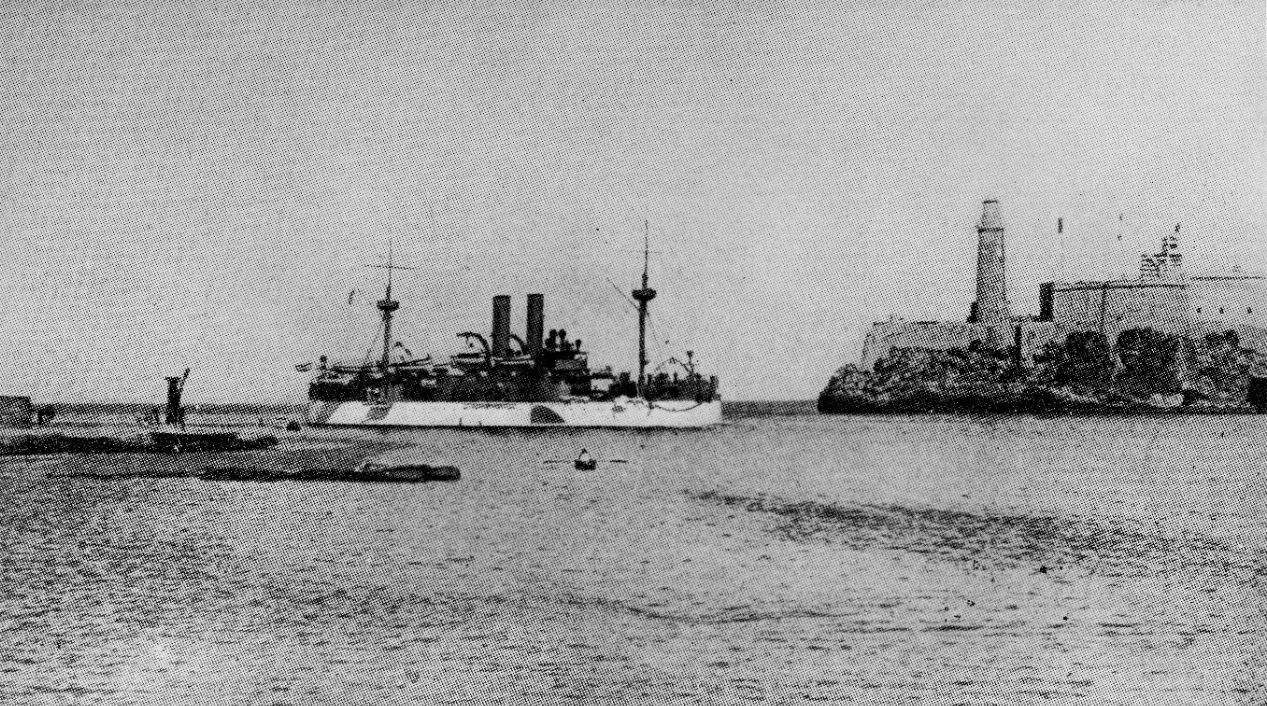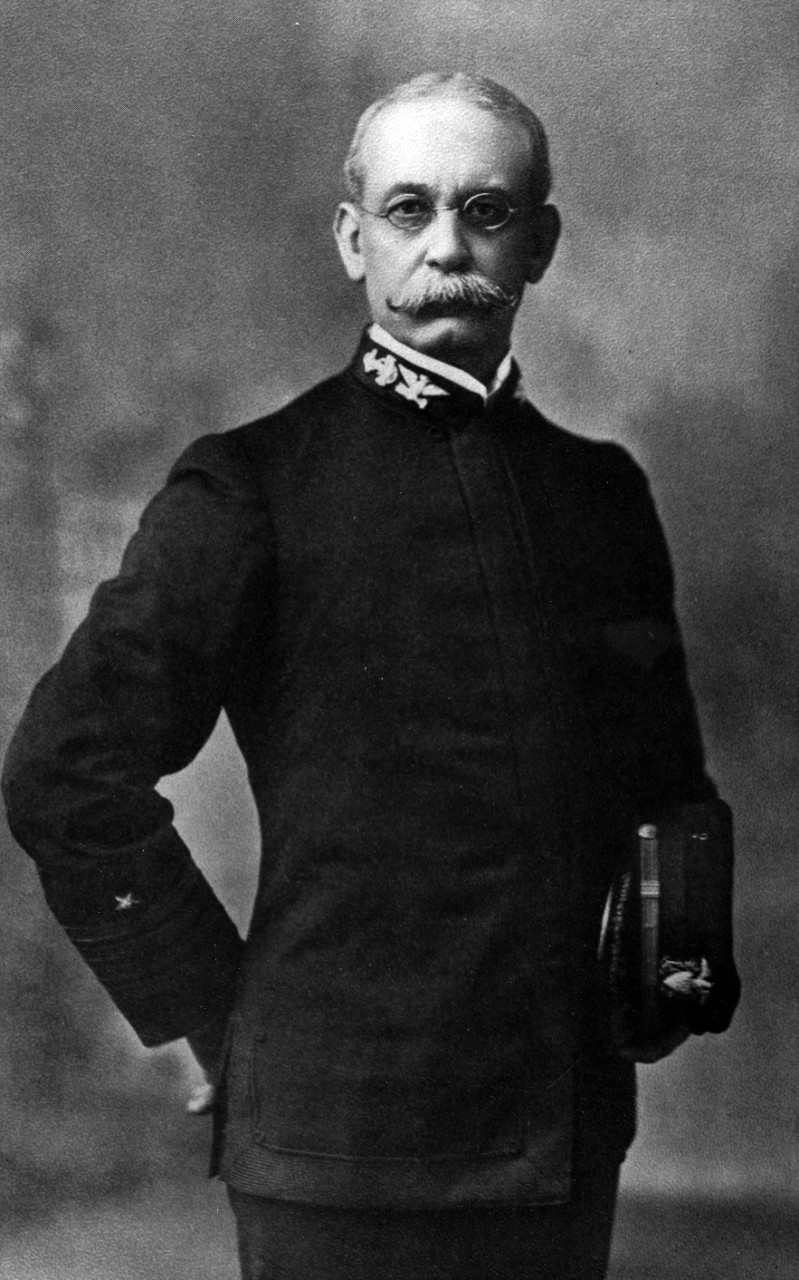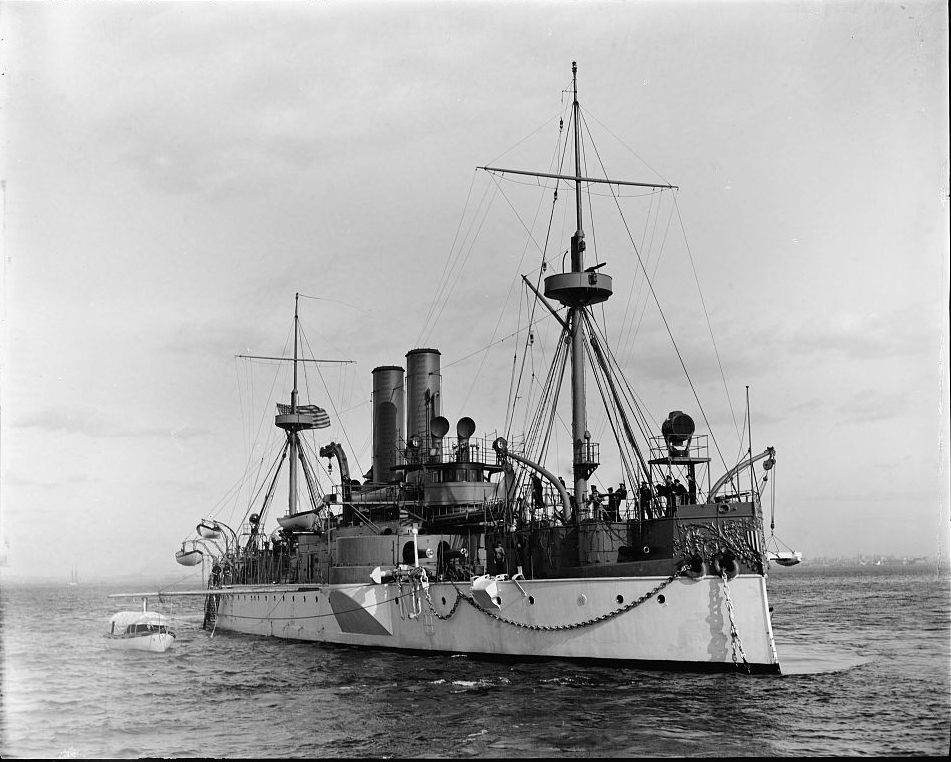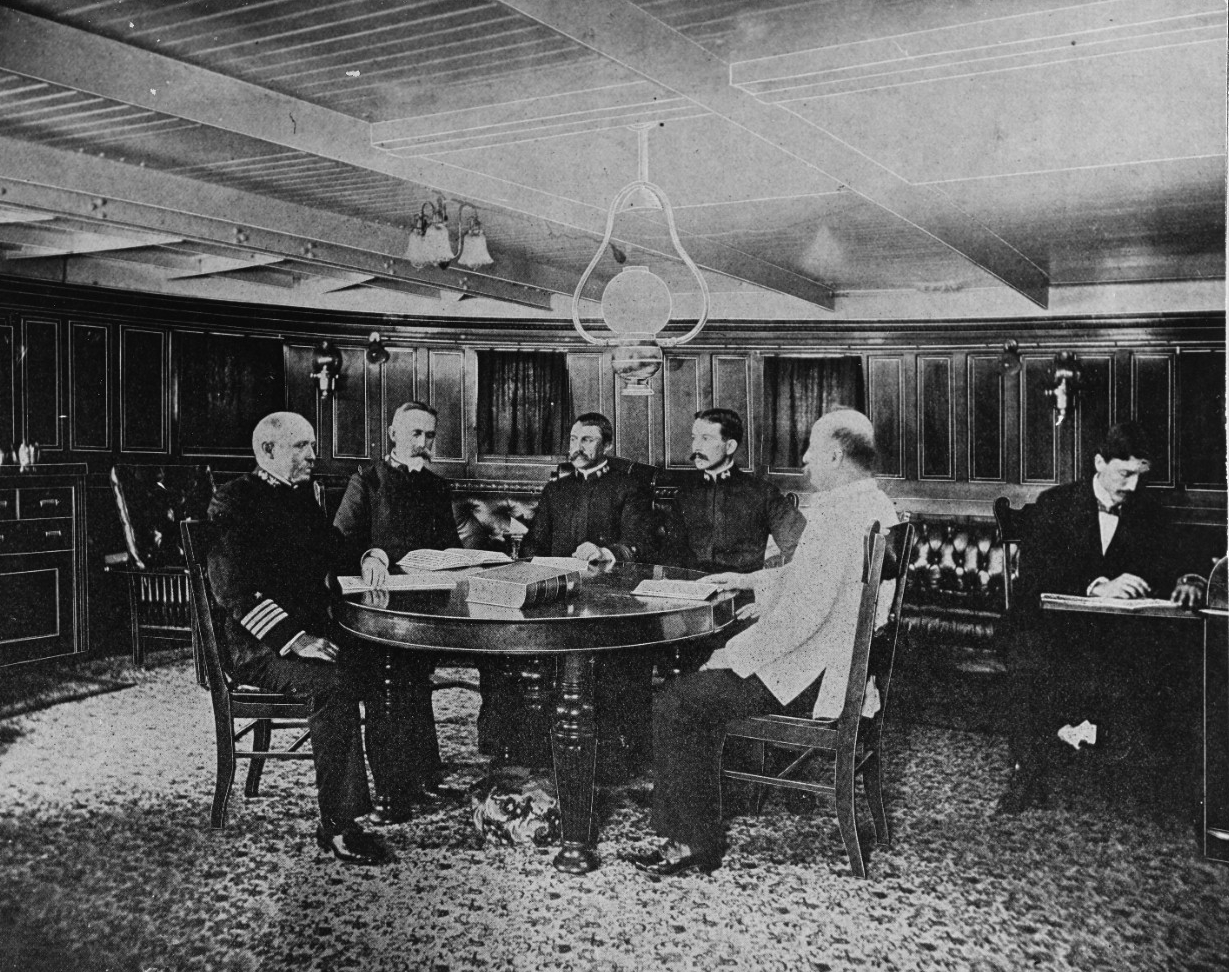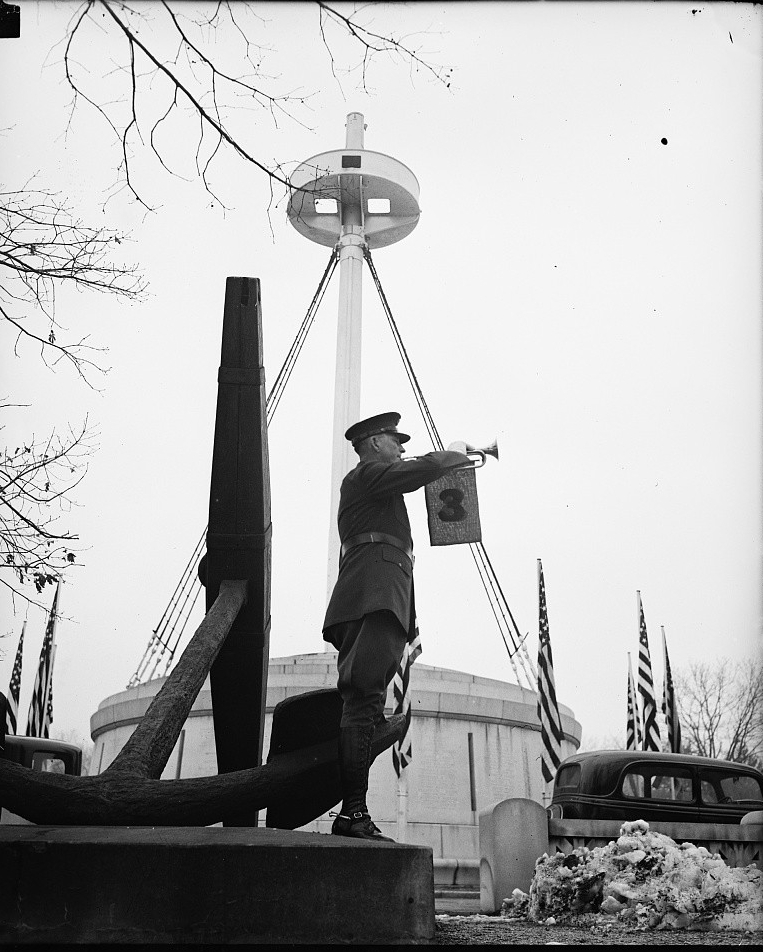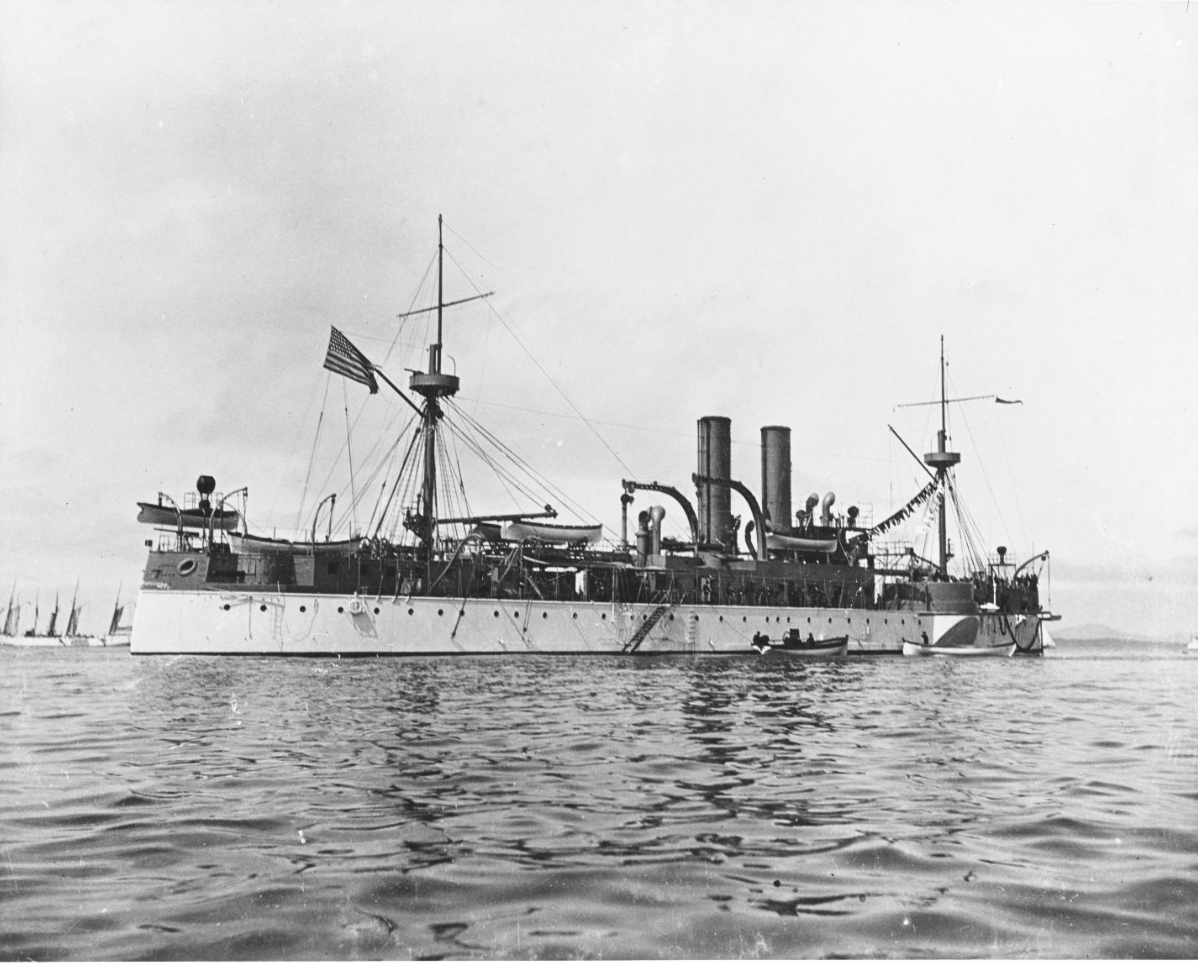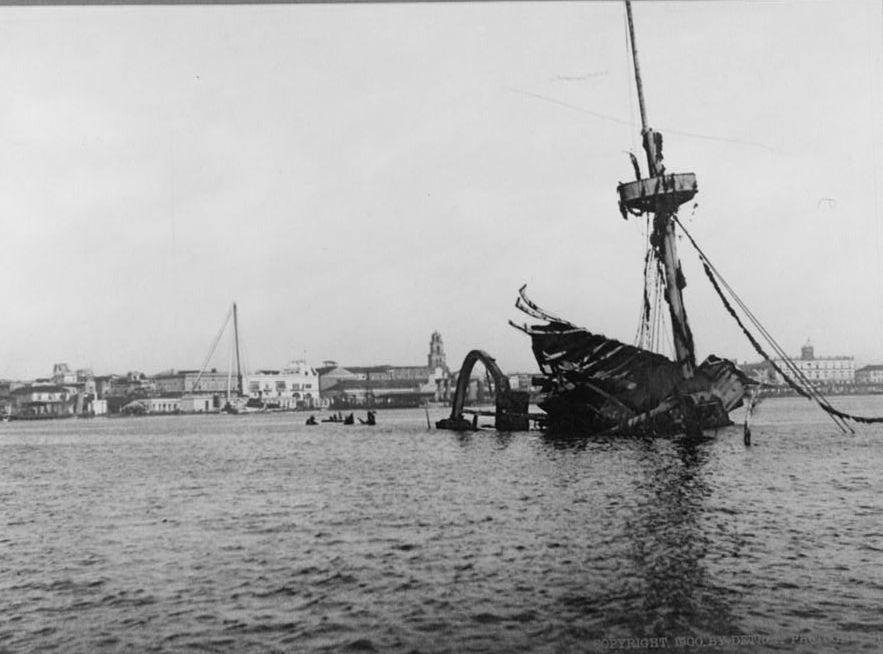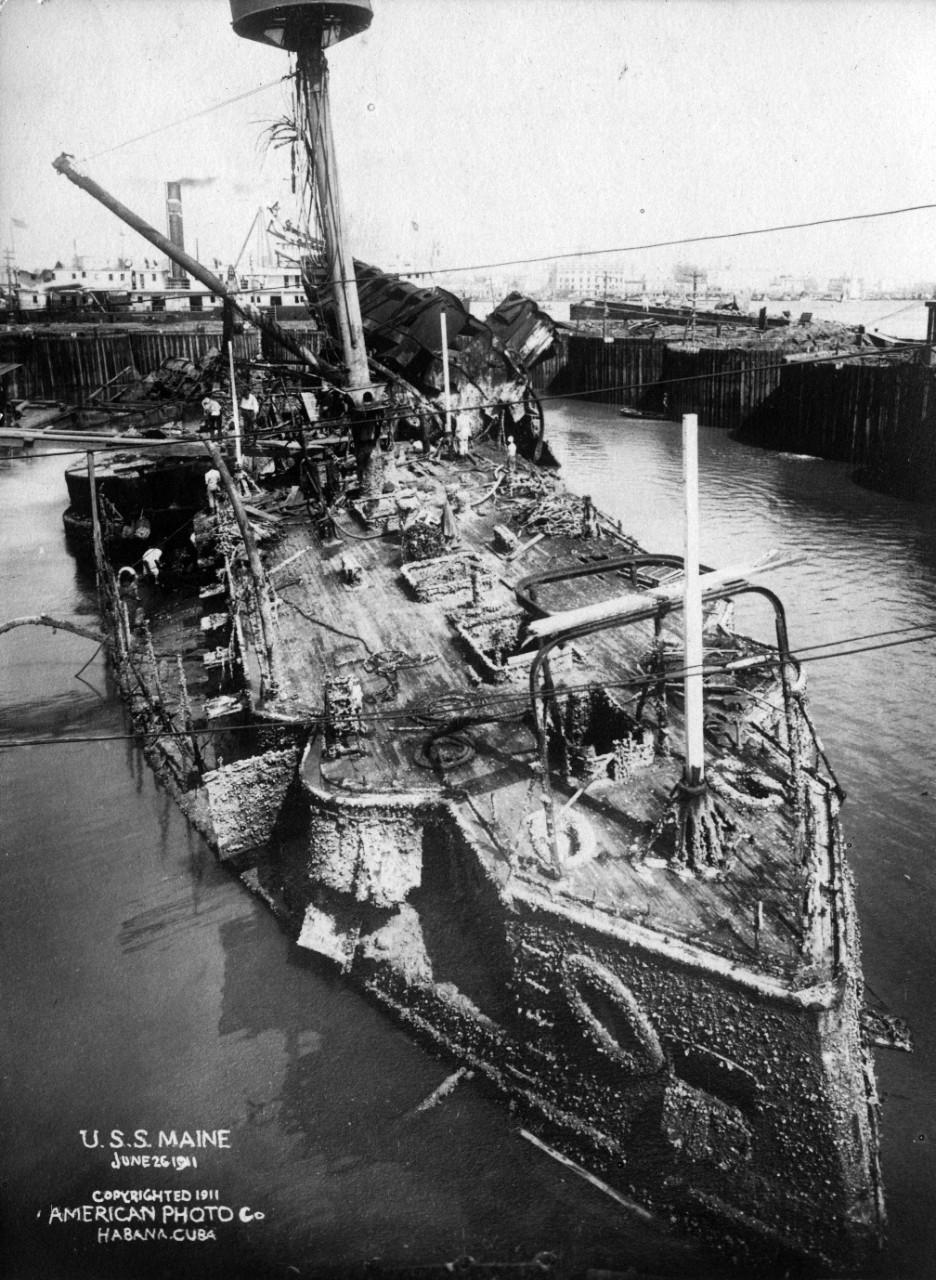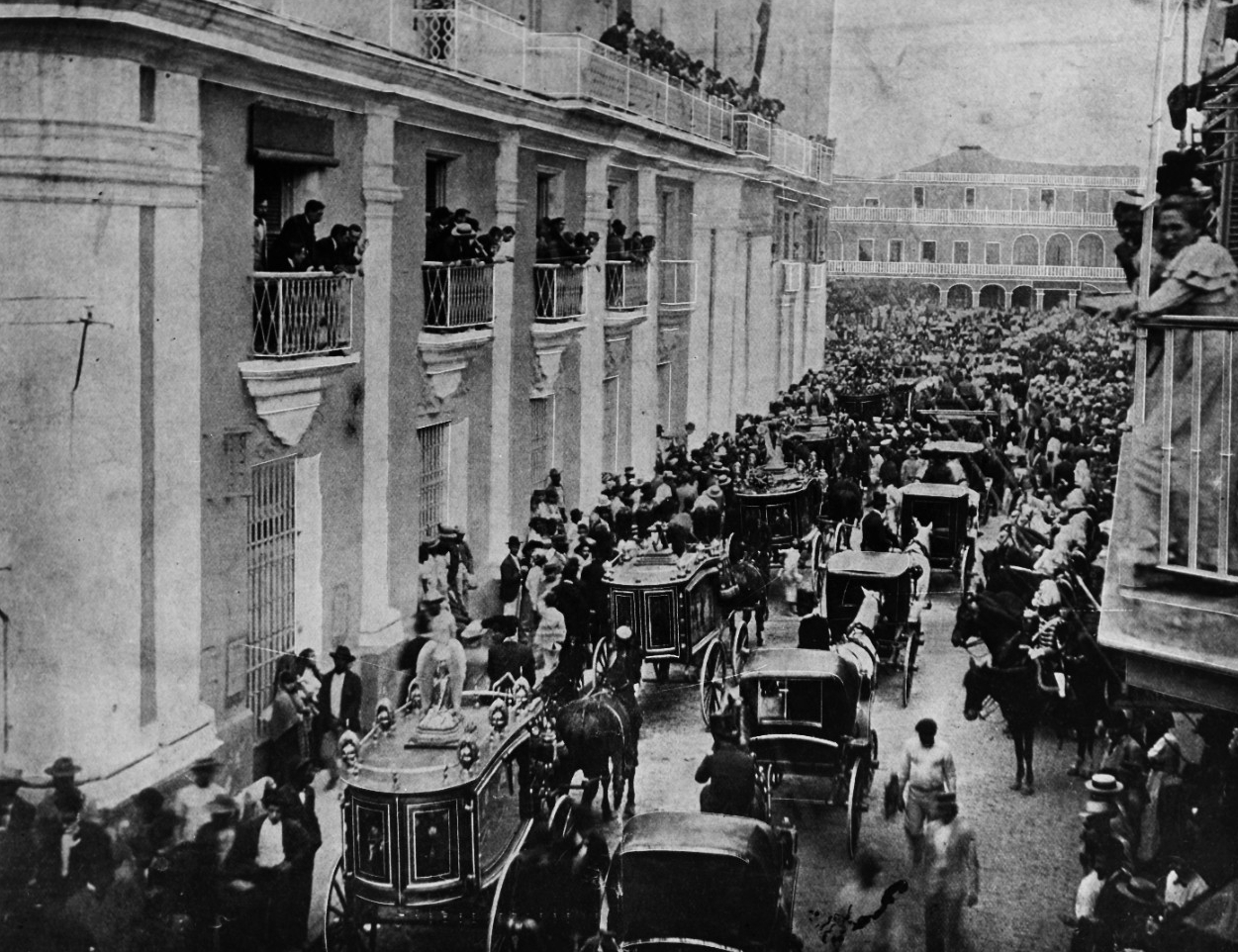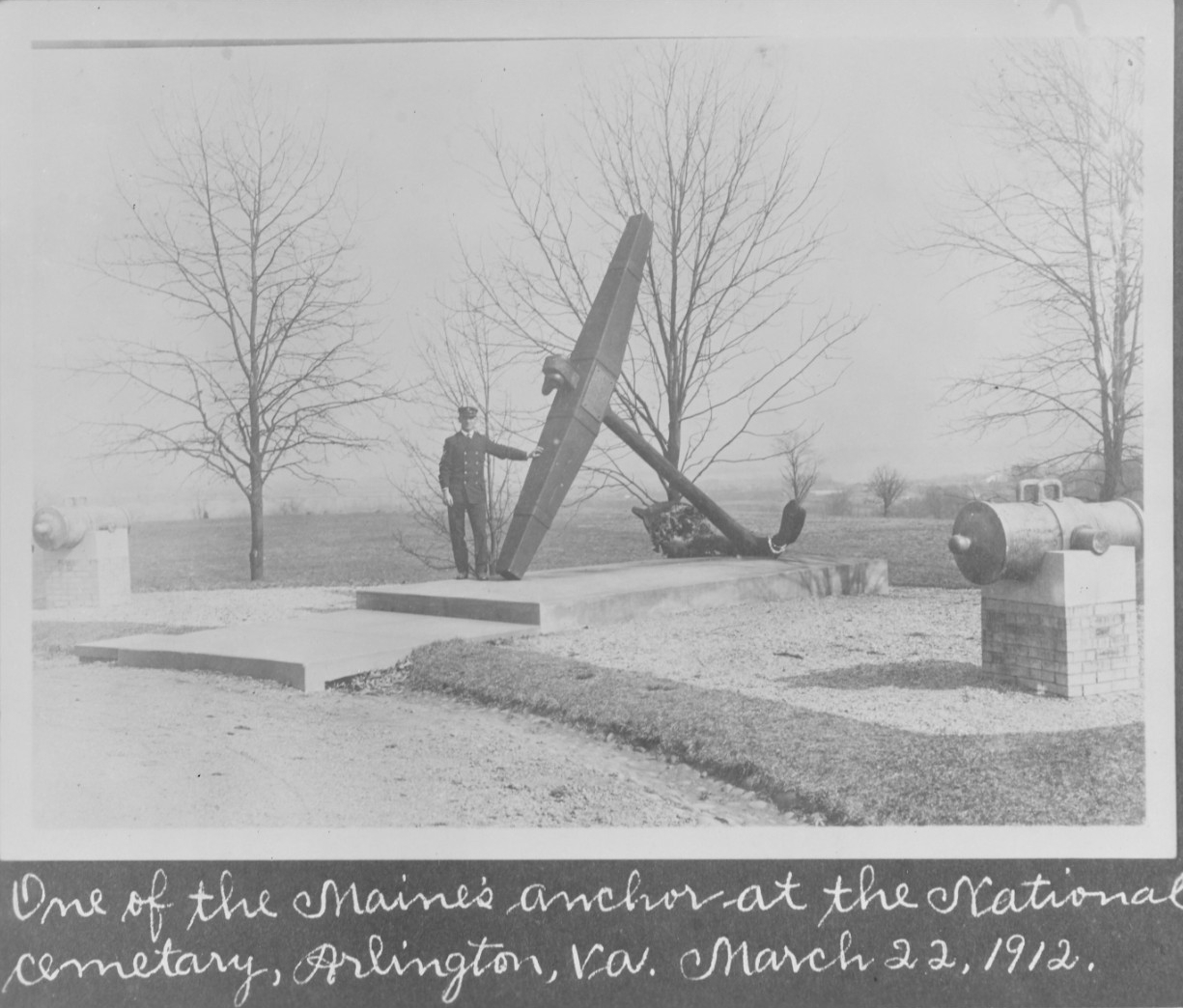Battleship Maine
The Spanish-American War (21 April to 13 August 1898) was a turning point in the history of the United States, signaling the country's emergence as a world power. The blowing up of the battleship Maine in Havana Harbor on the evening of 15 February was a critical event on the road to that war. In order to understand the role the ship's sinking played in the start of the war, one must know the context in which the event took place.
Tensions between Spain and the United States rose out of the attempts by Cubans to liberate their island from the control of the Spanish. The first Cuban insurrection was unsuccessful and lasted between 1868 and 1878. American sympathies were with the revolutionaries, and war with Spain nearly erupted when the filibuster ship Virginius was captured and most of the crew (including many American citizens) were executed. The Cuban revolutionaries continued to plan and raise support in the United States.
The second bid for independence by Cuban revolutionaries began in April 1895. The Spanish government reacted by sending General Valeriano Weyler y Nicolau with orders to pacify the island. The "Butcher," as he became known in the U.S., determined to deprive the rebels of support by forcibly reconcentrating the civilian population in the troublesome districts to areas near military headquarters. This policy resulted in the starvation and death of more than 100,000 Cubans. Outrage in many sectors of the American public, fueled by stories in the "Yellow Press," put pressure on Presidents Grover Cleveland and William McKinley to end the fighting in Cuba. American diplomacy, along with the return of the Liberal Party to power in Spain, led to the recall of General Weyler. However, beset by political enemies at home, the new Spanish government was too weak to enact meaningful reforms in Cuba. Limited autonomy was promised late in 1897, but the U.S. government was mistrustful, and the revolutionaries refused to accept anything short of total independence.
When pro-Weyler forces in Havana instigated riots in January 1898, Washington became greatly concerned for the safety of Americans in the country. The administration believed that some means of protecting U.S. citizens should be on hand. On 24 January, President McKinley sent the second-class battleship USS Maine from Key West to Havana, after clearing the visit with a reluctant government in Madrid.
The battleship arrived on 25 January. Spanish authorities in Havana were wary of American intentions, but they afforded Captain Charles Sigsbee and the officers of Maine every courtesy. In order to avoid the possibility of trouble, Maine's commanding officer did not allow his enlisted men to go on shore. Sigsbee and the consul at Havana, Fitzhugh Lee, reported that the Navy's presence appeared to have a calming effect on the situation, and both recommended that the Navy Department send another battleship to Havana when it came time to relieve Maine.
At 9:40p.m. on 15 February, a terrible explosion on board Maine shattered the stillness in Havana Harbor. Later investigations revealed that more than five tons of powder charges for the vessel's six and ten-inch guns ignited, virtually obliterating the forward third of the ship. The remaining wreckage rapidly settled to the bottom of the harbor. Most of Maine's crew were sleeping or resting in the enlisted quarters in the forward part of the ship when the explosion occurred. Two hundred and sixty-six men lost their lives because of the disaster: 260 died in the explosion or shortly thereafter, and six more died later from injuries. Captain Sigsbee and most of the officers survived because their quarters were in the aft portion of the ship.
Spanish officials and the crew of the civilian steamer City of Washington acted quickly in rescuing survivors and caring for the wounded. The attitude and actions of the former allayed initial suspicions that hostile action caused the explosion, and led Sigsbee to include at the bottom of his initial telegram: "Public opinion should be suspended until further report."
The U.S. Navy Department immediately formed a board of inquiry to determine the reason for Maine's destruction. The inquiry, conducted in Havana, lasted four weeks. The condition of the submerged wreck and the lack of technical expertise prevented the board from being as thorough as later investigations. In the end, they concluded that a mine had detonated under the ship. The board did not attempt to fix blame for the placement of the device.
When the Navy's verdict was announced, the American public reacted with predictable outrage. Fed by inflammatory articles in the "Yellow Press" blaming Spain for the disaster, the public had already placed guilt on the Spanish government. Although he continued to press for a diplomatic settlement to the Cuban problem, President McKinley accelerated military preparations begun in January 1898 when an impasse appeared likely. The Spanish position on Cuban independence hardened, and McKinley asked Congress on 11 April for permission to intervene. On 21 April, the president ordered the Navy to begin a blockade of Cuba, and Spain followed with a declaration of war on 23 April. Congress responded with a formal declaration of war on 25 April, made retroactive to the start of the blockade.
The destruction of Maine did not cause the U.S. to declare war on Spain, but it served as a catalyst, accelerating the approach to a diplomatic impasse. In addition, the sinking and deaths of U.S. Sailors rallied American opinion more strongly behind armed intervention.
In 1911, the Navy Department ordered a second board of inquiry after Congress voted funds for the removal of the wreck of Maine from Havana Harbor. U.S. Army engineers built a cofferdam around the sunken battleship, thus exposing it, and giving naval investigators an opportunity to examine and photograph the wreckage in detail. Finding the bottom hull plates in the area of the reserve six-inch magazine bent inward and back, the 1911 board concluded that a mine had detonated under the magazine, causing the explosion that destroyed the ship.
Technical experts at the time of both investigations disagreed with the findings, believing that spontaneous combustion of coal in the bunker adjacent to the reserve six-inch magazine was the most likely cause of the explosion on board the ship. In 1976, Admiral Hyman G. Rickover published his book, How the Battleship Maine Was Destroyed. The admiral became interested in the disaster and wondered if the application of modern scientific knowledge could determine the cause. He called on two experts on explosions and their effects on ship hulls. Using documentation gathered from the two official inquiries, as well as information on the construction and ammunition of Maine, the experts concluded that the damage caused to the ship was inconsistent with the external explosion of a mine. The most likely cause, they speculated, was spontaneous combustion of coal in the bunker next to the magazine.
Some historians have disputed the findings in Rickover's book, maintaining that failure to detect spontaneous combustion in the coalbunker was highly unlikely. Yet evidence of a mine remains thin and such theories are based primarily on conjecture. Despite the best efforts of experts and historians in investigating this complex and technical subject, a definitive explanation for the sinking of Maine remains elusive.
*****
Media
Artifacts
- 6"/30 Caliber Gun from USS Maine (ACR-1)
- Maine Memorial Plaque
- .38 Caliber Revolver, Colt Navy Model 1895 Recovered from the Wreck of Maine
Related Resources
- Casualties of Maine
- Spanish-American War
- Maine—ship history
- H-Gram 015-3: “Remember the Maine! To Hell with Spain!”
- Destruction of the Maine (1898)
- Wreck of the battleship Maine—(1898) video
Selected Imagery
Maine Court of Inquiry, 1898. Members of the Navy Court of Inquiry examining Ensign Wilfrid V. Powelson, on board the U.S. Light House Tender Mangrove, in Havana Harbor, Cuba, circa March 1898. Those seated around the table include (from left to right): Captain French E. Chadwick, Captain William T. Sampson, Lieutenant Commander William P. Potter, Ensign W.V. Powelson, Lieutenant Commander Adolph Marix. Photograph copied from Uncle Sam's Navy, 12 April 1898. U.S. Naval History and Heritage Command photograph. Catalog#: NH 46764.
Funeral procession for crewmen killed when Maine exploded, in the streets of Havana, Cuba, shortly after the disaster, 15 February 1898. Retouched halftone photograph, copied from Uncle Sam's Navy, Volume IV, Number 3, 19 April 1898. U.S. Naval History and Heritage Command photograph. Catalog#: NH 46765.

